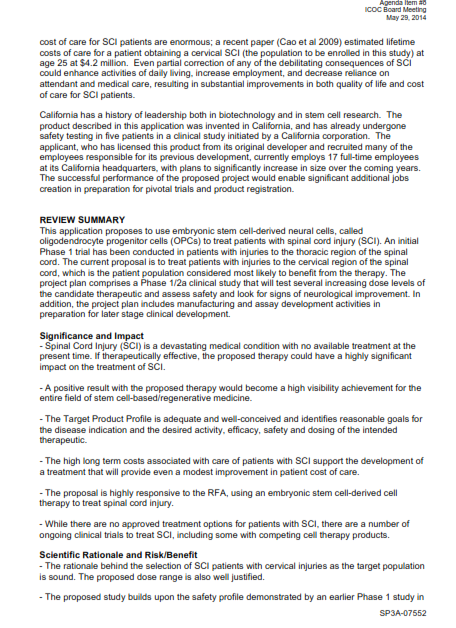 |
| Julie Robillard, CIRM photo |
Twitter –
the non-chirping variety -- drew attention this week from Kevin McCormack, the majordomo
of communications at California’s $3 billion stem cell agency. His job is to
tell the story of the agency and build public support.
McCormack
was at the annual meeting of the International Society for Stem Cell Research
in Vancouver in Canada where he ran across Julie Robillard, a neuroscientist
who is looking into how social media – blogging, Twitter, etc. – are shaping
how science is communicated.
Robillard, who writes a blog on neuroscience, had a poster presentation at the meeting dealing with the public policy
implications of the use of social media related to stem cell research. McCormack discussed her work yesterday on the stem cell agency’s blog.
“She says this is clear evidence there is worldwide interest in stem cell research. The problem, however, is that the quality of many of the tweets was also widely varied. Some came from researchers and were thoughtful and trying to raise awareness about new research or important questions, but others—many others—were more interested in promoting stem cells as cures for everything from sagging skin or acne to severed spinal cords.”
“She says social media is reshaping how conversations take place between people who are interested in stem cells: anyone from a scientist to a patient to a provider of sham therapies. She says there is a lot of information out there about stem cells but the quality is not always great and in some cases it’s downright questionable.”
McCormack continued,
“News reports, stories in newspapers, on the radio and TV or online are the single biggest drivers of traffic on Twitter and are a reminder of the importance of good journalism when covering these issues. A poorly written or researched story that makes inflated claims about a treatment, or fails to mention that the research was done in mice not people, can get huge play on social media and mislead many people. This is a little worrying when fewer and fewer mainstream media outlets have a dedicated science journalist on staff.”
McCormack concluded,
“She also says it’s a reminder to those of us trying to inform the public about all the progress being made with stem cell research that we need to be more engaged and more active, so that our voices can help drown out those with bad information or shoddy products to sell.”






